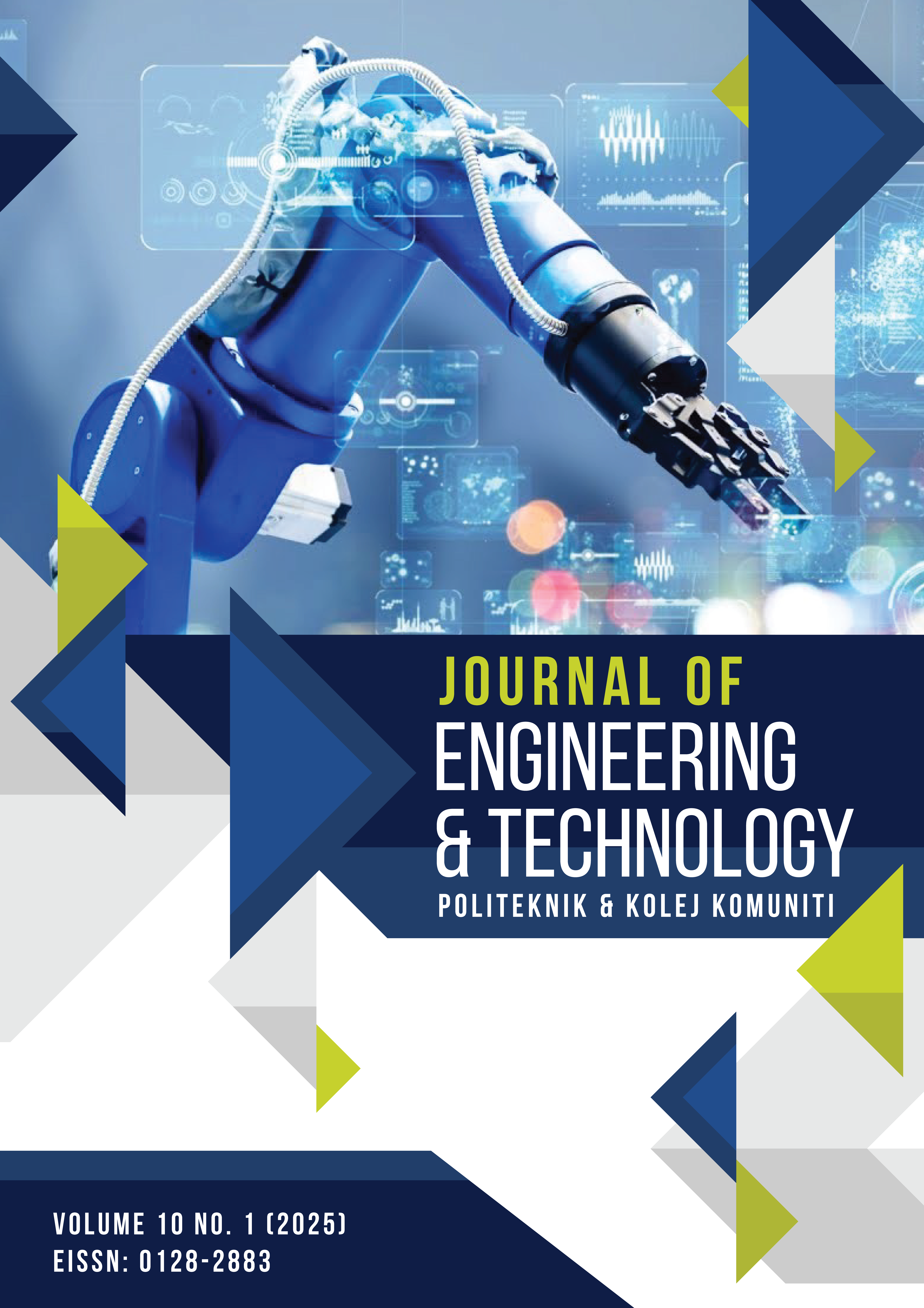An IoT-Enabled Smart Safety Helmet for Enhancing Worker Protection on Construction Sites
Keywords:
Construction Safety, ESP32 Microcontroller, Internet of Things (IoT), Safety Helmet, Smart Wearable DeviceAbstract
Construction sites are hazardous environments where workers are frequently exposed to heavy machinery, extreme temperatures, and various harmful materials. These conditions significantly increase the risk of both fatal and non-fatal accidents. Although conventional personal protective equipment such as safety helmets is widely used, it typically lacks real-time hazard detection and rapid emergency response capabilities. This study presents the design and prototype development of an IoT-enabled smart safety helmet aimed at enhancing worker protection through continuous environmental monitoring and automated hazard alerts. The helmet integrates gas, temperature, and light sensors with a NodeMCU ESP32 microcontroller. This integration enables automated activation, real-time data acquisition, and wireless transmission to a central monitoring dashboard. The system features onboard decision-making that triggers alerts when sensor readings exceed predefined safety thresholds, providing immediate feedback and facilitating prompt preventive action. Sensor data are transmitted via Wi-Fi to allow real-time supervision and automated incident logging. The prototype was initially validated under simulated hazardous conditions and subsequently tested on active construction sites to assess its functionality in real-world environments. Results indicate that the smart helmet effectively detects hazardous conditions and delivers timely alerts, thereby enhancing worker protection and situational awareness. A comparative analysis between IoT-equipped and non-equipped zones confirmed improved risk mitigation and supervisory responsiveness. These findings highlight the potential applications of IoT-based smart safety helmets as a promising wearable device for improving health and safety management in high-risk construction environments, aligned with the broader goals of Industry 4.0.
Downloads
Published
How to Cite
Issue
Section
License
Copyright (c) 2025 Politeknik & Kolej Komuniti Journal of Engineering and Technology

This work is licensed under a Creative Commons Attribution-NonCommercial-NoDerivatives 4.0 International License.







